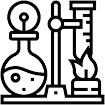Home / Products / Workwear / Medical Garments / Scrub Suib/Nurse Uniform
Wujiang TTK®
Textile&Finishing
Co., Ltd.
Wujiang TTK@ Textile&Finishing Co., Ltd is professional China Scrub Suib/Nurse Uniform Manufacturers and Scrub Suib/Nurse Uniform factory, passing ISO9001:200 quality management system certified by SGS. The company has greige fabric weaving factory, coating factory, lamination and bonding factory, transfer coating and tractor roller coating high-end membrane factory and printing factory subordinated to it.The company also has its own Trade Dept.
-
Our professional Custom Scrub Suib/Nurse Uniform, The company has greige fabric weaving factory, coating factory, lamination and bonding factory, transfer coating and tractor roller coating high-end membrane factory and printing factory subordinated to it.The company also has its own Trade Dept., Sample Dept., Research and Development Dept. and Test Center which forming one stop service for textile products.
TTK is a research & development enterprise that has been engaged in functional anti-microbial fabric for 2 decades. It was initial devoted to research and development of high-tech military fabrics, medical antibacterial materials and civil functional fabrics. -
In 2003, the company served as al supplier of raw fabrics and finished goods for suits used in fighting SARS, and ever since it has viewed medical high-tech materials as one of its. directions for research & development. In view of the prevailing COVID-19, the enterprise has developed as soon as possible the later materia non-woven fabric + PE highly breathable antibacterial membrane composite product) suitable for disposal medical protective suit production line and organized production of novel disposable medical protective suit made of TTK-PE disposal overall gown. The novel product can guarantee antibacterial performance and breathability of the protective suit and high strength of non-woven fabric + PE highly breathable antibacterial membrane composite fabric.
-
Explore more
We are a textile manufacturing enterprise mainly engaged in textile finished products sales and finishging manufacturing, with self - run import and export right, passing ISO9001:200 quality management system certified by SGS.








-

Standardized Workshop
ISO9001 2008 The industry's standardized and large-capacity machinery accessory manufacturers, the quality of customers is guaranteed, and the delivery time of customers is guaranteed.
-

Sophisticated Equipment
International sophisticated processing equipment, superior design capabilities, and exquisite manufacturing technology, escorting customers' quality assurance at any time.
-

Lab Experience
The company has an advanced laboratory to provide on-site experience for customers who have doubts, allowing you to make a choice without regrets.
-

Strong Service Team
In order to facilitate the pre-sale, sale and after-sales service of customers across the country, the company has set up a professional team, no matter where you are, we are by your side!
-
-1.png?imageView2/2/format/jp2) Industry News
Industry NewsSMS non-woven anti-virus isolation gown: waterproof protection, protecting the frontline of medical care
On the busy medical frontline, medical staff fight against various viruses, bacteria, and liquid contaminants every day. These liquid contaminants, su
-
-1.png?imageView2/2/format/jp2) Industry News
Industry NewsPP+PE non-woven fabric: setting a new benchmark for disposable tape-free coveralls
In today's pursuit of comfort, durability and environmental protection, PP+PE non-woven materials provide a solid material foundation for disposable t
-
 Industry News
Industry NewsDisposable tape-less coveralls: innovation and improvement in comfort
In a modern society that pursues health and comfort, disposable tape-free jumpsuits, with their unique design, bring unprecedented comfort to the wear
-
 Industry News
Industry NewsDisposable anti-phage medical protective clothing: equal emphasis on protection and comfort
In the medical field, protective clothing is an important equipment for medical staff and is crucial to ensuring their work safety. With the continuou
-
 Industry News
Industry NewsBreathable Level 1 Isolation Gown: The Secret Behind Superior Protective Performance
In the medical field, the importance of protective equipment is self-evident. Breathable Level 1 isolation gown has become an indispensable protective

 English
English 简体中文
简体中文
.png?imageView2/2/format/jp2)




